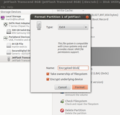While I've been using LTE since the very early days it has mostly been for Internet connectivity so far. When it came to the smartphone in my pocket I was downright conservative and only recently switched to a Samsung Galaxy S4 that comes with LTE. When making the switch I also decided that it was just the right opportunity to also do something about bloatware, crapware, vendor specific launchers and spyware by installing a vendor independent Android flavor.
There are many 'mod's' available these days and CyanogenMod is probably the most well known. So I decided to give it a go, and the pretty much automated installer CyanogenMod offers for a handful of devices made it a quick and hassle-free adventure. Download an app to the S4, download the installer to a Windows PC and let both run. With a few interactions and about half an hour later my S4 booted with a vanilla CyanogenMod Android 4.4.2 image.
The automatic CyanogenMod installer also downloaded and installed the Google Play store and while the device doesn't call 'home' as much to Google and others compared to vendor specific Android versions, there are still frequent interactions with mtalk and other Google services. But since CyanogenMod offers a built in root mode, that's easy to take care of by modifying the hosts file as I described here.
So here we go, my first smartphone with a custom firmware not from the manufacturer and not directly from Google either. A moment to savor, it's almost like in the PC world. But there's a price to pay as some features are missing or don't quite work as I would like them to. For example: When roaming, the status bar only displays an 'R' next to the reception quality bars and omits the network technology indicator. Also, I'm no longer able to disable GSM as I don't like to drop down to 2G for various reasons even if that means I am out of coverage every now and then. That's a small price to pay, however, as even many vendor supplied Android versions of devices with LTE don't allow locking to UMTS and LTE. Another thing that has also disappeared is the Wideband-AMR capability the original Android version activated in the baseband on startup. Together with not showing the radio technology while roaming I miss that the most.
Let's see, perhaps there's a way to get some of these things back. I'll keep you posted.
